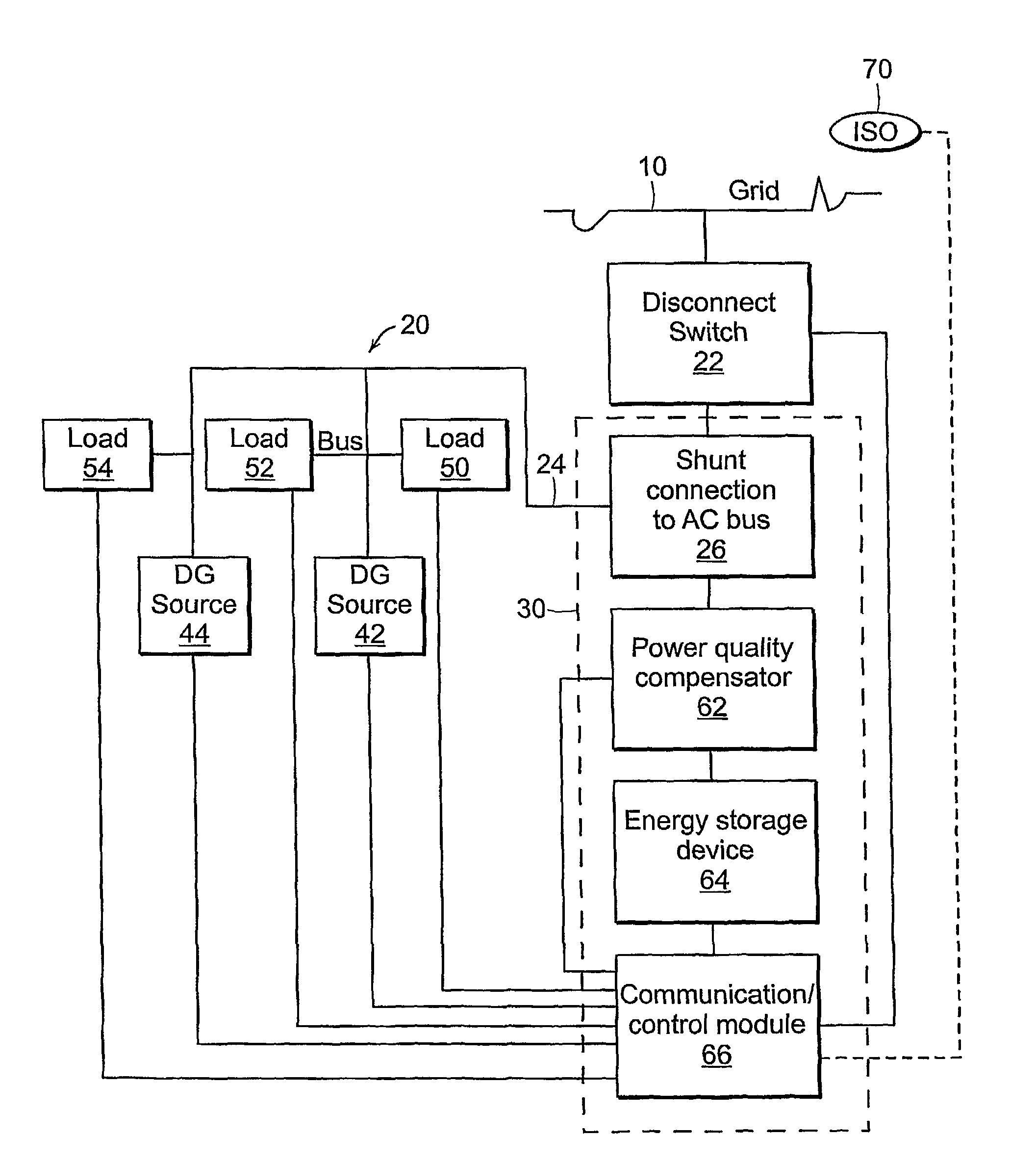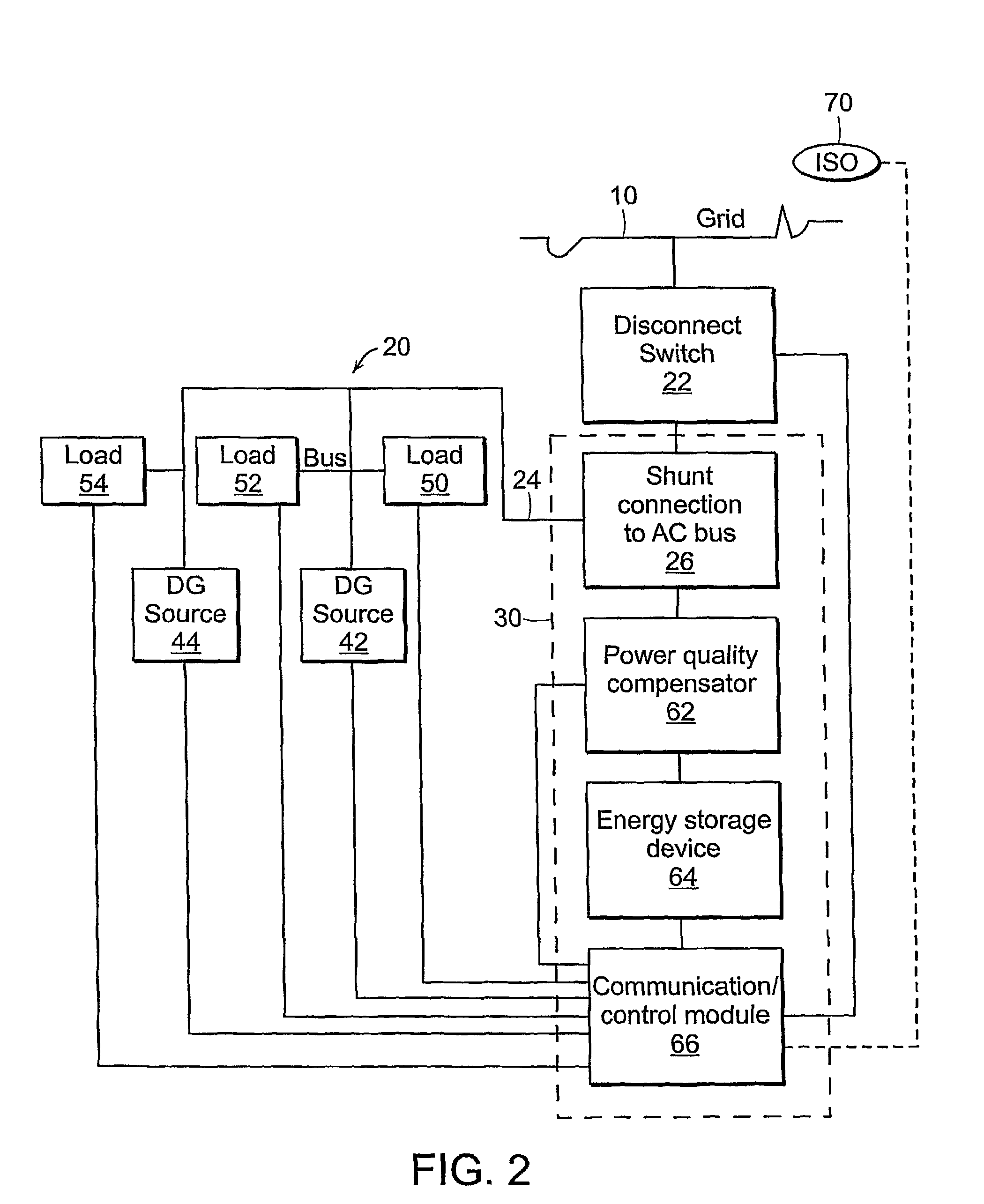Methods and systems for intentionally isolating distributed power generation sources
a power generation source and distributed technology, applied in the field of intentionally isolating distributed power generation sources, can solve the problems of small grids generally not having much load, dg sources tend not to follow loads well, and current dg systems have various limitations
- Summary
- Abstract
- Description
- Claims
- Application Information
AI Technical Summary
Benefits of technology
Problems solved by technology
Method used
Image
Examples
Embodiment Construction
)
[0036]Referring now to the various figures of the drawing wherein like reference characters refer to like parts, there is shown in FIG. 1 a block diagram of an exemplary system for connecting one or more distributed generation (DG) sources and one or more loads to form a mini-grid. The mini-grid preferably is configured and arranged to be connected to a utility grid, where the mini-grid can be a distributed energy resources (DER) system made up of one or more DG sources and one or more loads. Suitable DG sources include but are not limited to: turbine generators, internal combustion engines / generators, micro-turbines, gas turbines, photovoltaics / solar panels, wind turbines, fuel cells, batteries, capacitor-type storage systems, and flywheel energy storage systems. Any number or combination of these sources can be provided, depending upon the application or the particular mini-grid.
[0037]As shown in FIG. 1, the utility grid 10 can be operated by a utility service provider or area op...
PUM
 Login to View More
Login to View More Abstract
Description
Claims
Application Information
 Login to View More
Login to View More - R&D
- Intellectual Property
- Life Sciences
- Materials
- Tech Scout
- Unparalleled Data Quality
- Higher Quality Content
- 60% Fewer Hallucinations
Browse by: Latest US Patents, China's latest patents, Technical Efficacy Thesaurus, Application Domain, Technology Topic, Popular Technical Reports.
© 2025 PatSnap. All rights reserved.Legal|Privacy policy|Modern Slavery Act Transparency Statement|Sitemap|About US| Contact US: help@patsnap.com



